Classification, structure, operating principle? Check maintenance and repair suspension (shrug)
Cars have always been a useful means of transportation for anyone who can afford it. Most people who own a car are always concerned about how their engine and transmission are, how powerful is the engine? Does it consume a lot of fuel? Is the gearbox equipped on the car a normal gearbox? Or automatic transmission with speed? Or a continuously variable automatic transmission?
But have you ever thought, how can a car be stable when traveling at high speeds? Why are we less likely to be shaken or shaken when sitting inside a car? Why can the vehicle still be able to grip the road surface and spin "cornering" at high speed without overturning? Let's learn about the suspension system in Thanh Phong Auto to know more about why.

Suspension is one of the important systems in the car, it helps to stabilize the body of the vehicle when moving. The suspension is a flexible intermediate system, which connects the axles to the body, the suspension is made up of various details such as joints, pillars (important wheel corners such as : king-pin, caster, camber), horizontal bars, stabilizer bars and vibration absorbers; they work together and allow relative movement between the wheels and the body.
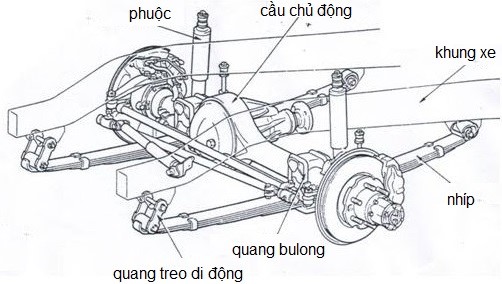
The suspension provides stability to the vehicle when traveling at high speeds, revs or brakes suddenly.
The damping mechanism helps to reduce body vibration caused by road conditions by absorbing the vibrations and converting it into another form of energy, making the occupants feel calmer.
A car is always subjected to other forces when the vehicle is operating on the road, causing the body of the car to always oscillate in certain directions, and the person sitting on the vehicle is therefore also affected by and leading to the situation. Not good for people in the car.
The requirement is to have a flexible link between the body and the wheel to meet all the dynamic conditions when the vehicle is moving on the road, it allows relative movement between them without causing. any deformations to the vehicle body or any other relevant details.
The car suspension system is a necessary system to support the entire weight of the vehicle, including the weight of the vehicle and the weight of the occupants.
A car needs a suspension to maintain contact between the wheel and the road. When the vehicle turns, the body always tends to rotate around the axis parallel to the body direction, when this happens, it can cause the car to overturn and endanger the occupants. When the vehicle accelerates from a stationary position or abruptly brakes on the move, the vehicle's body tends to tip over or in front due to the inertial force acting on the body, making the wheel lose its ability to grip the road when increasing. sudden acceleration or braking.
The suspension works in tandem with the steering and the brakes to create stability when the vehicle is on the road. The king-pin and caster angles are created by a stitching of the suspension to allow smooth control of the steering wheel with the guide wheel.
Shock absorbers and shock absorbers are integrated in the suspension to absorb the vibration caused by the road surface and quickly quench that vibration, making the driving so smooth and comfortable. feel comfortable.
+ Proposal: Automatic Gearbox Repair For Cars
A suspension system where the wheels on either side of the front or back are connected by a uniform girder. When the vehicle moves over the "potholes" or bumpers of the road, the vibration of one wheel will cause relative movement of the other. The dependent suspension is usually arranged on SUVs such as TOYOTA Fortuner, TOYOTA Hiace, TOYOTA Land Cruiser, HYUNDAI Santafe ... and also equipped on pickups such as TOYOTA Hilux, Mazda BT3, MITSUBISHI Triton, NISSAN X-trail, FORD Ranger ...

A suspension system where two wheels on the same bridge can move independently of each other. No relative movement occurs between the wheels, which means that the wheels are all independently connected to the chassis. When the vehicle moves over the pavement, the vibration of any one wheel will not affect the other wheels.
Suspension systems with two upper and lower A arms or Mac-pheson suspension are examples of independent suspension. We can easily see this type of suspension on most cars such as TOYOTA Vios, Altis, Camry, Mazda 3, Mazda6, KIA Cerato, KIA Morning, HONDA City, HYUNDAI Elantra ...

The main advantage of the independent suspension system is that it maintains the continuous contact of the wheels with the road surface, which is the basic factor for stabilizing the vehicle body when the vehicle is moving.
Basically, a normal suspension system is made up of three main components: the elastic, the damping and the directional mechanism.
The elastic part is an important part of the suspension, which absorbs the impact caused by road conditions, translates into oscillation and stores that energy in the elastic element.
Types of elastic elements commonly used today:
Cylindrical spring: is a type of spring with good compression resistance, high hardness, and quick response to the smallest impacts from the road surface, so the smoothness of the vehicle increases when equipped with this elastic element. Vehicles often equipped with cylindrical springs such as TOYOTA Vios, Altis, Camry, Mazda3, KIA Cerato, KIA Morning, HYUNDAI I10, HYUNDAI Elantra...
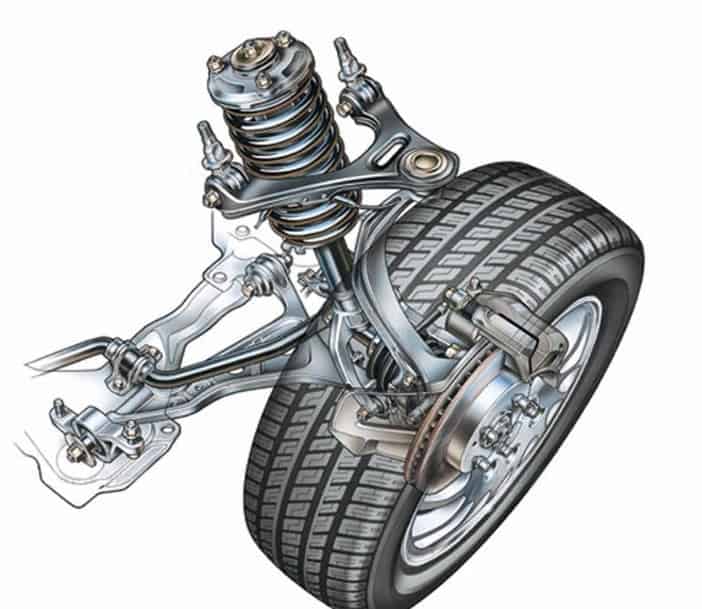
Tweezers (leaf spring): this is a type of spring made from bent elastic steel sheets, they are arranged in increasing order of steel leaf length. When the vehicle moves over bumps in the road surface, the tweezers will stretch due to the road surface load acting on the tweezers, then it will tend to return to its original state, thus functioning like a spring. . The biggest disadvantage of tweezers is that it is difficult to absorb small vibrations from the road surface due to internal friction between the tweezers, causing the car to lose its smoothness. Therefore, tweezers are often placed on vehicles with large tonnage and need high durability.
This type of shock absorbers can be easily seen on trucks, commercial vehicles and passenger cars with rear-wheel drive such as TOYOTA Fortuner, TOYOTA Land Cruiser, MITSUBISHI Triton, FORD Ranger, CHEVROLET Colorado ...
Torsion bar: is a solid cylindrical bar, made from steel with high torsional resistance. One end of the torsion bar is fixed on the vehicle frame and the other end is fixed to fork A. When the vehicle goes over bumps in the road surface, fork A will shake around the axis of the torsion bar, causing the torsion bar to twist. Then it tends to return to its original state, pushing fork A back to its old position.
The advantage of the suspension using the elastic coil element is to help reduce the ground clearance, thereby reducing the center of gravity to increase stability of the vehicle. You will easily encounter this type of suspension on SUVs of FORD manufacturer such as: Everest, Escape; Yyang song Korando ...
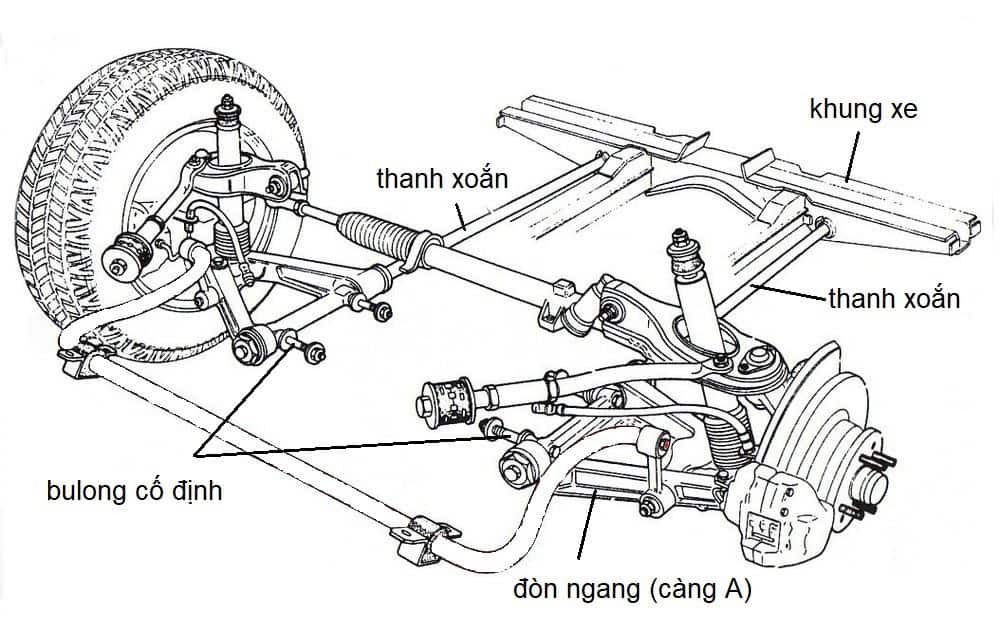
Shock absorbers, also known as shock absorbers, shock absorbers have the function of quenching the vibration of the shock absorbers quickly, creating comfort for the people sitting in the car, while also maintaining contact. Continuous road surface of the wheel. Shock absorbers fitted on modern cars are usually hydraulic or pneumatic forks, it is a structure similar to hydraulic cylinders, including an outside cylinder, a piston and a sliding side drive company. In the cylinder, the cylinder is filled with high viscosity liquid to create a barrier to piston movement inside the cylinder.
This is an improved fork of the single hydraulic fork, it overcomes the situation of the fork being stiff during the piston's downward stroke (compression stroke of the spring) due to the volume of the piston pushing the piston over the lateral fluid volume. in the cylinder increases the liquid pressure, it generates a force against the movement of the piston, the person sitting on the car will therefore feel very shock when the fork occurs.
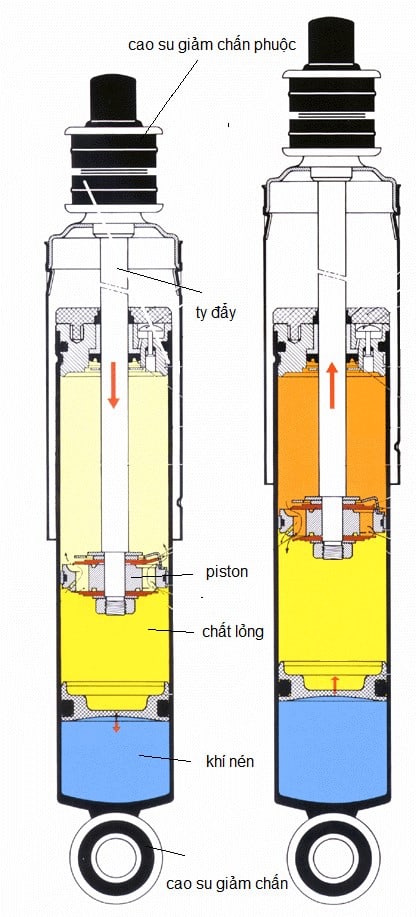
This single-piece hydraulic / oil-air fork overcomes this situation by arranging a compressed air compartment under the fluid chamber, since the air is compressible, so when the piston is filled with fluid, the pressure increases. The car will be compressed again, so the fork still works normally, the smoothness is improved significantly when cars are equipped with this type of shock absorber.
Similar to the principle of anti-fork fork above, the dual-type hydraulic fork arranges an auxiliary cylinder cavity surrounding the outside of the main cylinder cavity, when the piston rod goes down to shock the liquid inside the main chamber, the liquid will be ejected. external sub-chamber, so the fluid pressure inside the main cylinder cavity will remain the same, thus the phenomenon of fork stiffness is overcome.
But this type of fork has a huge drawback, that is the ability of the fork to cool down, the hot fork quickly reduces the viscosity of the inner fluid, reducing the ability to quench the rapid oscillation of the fork.
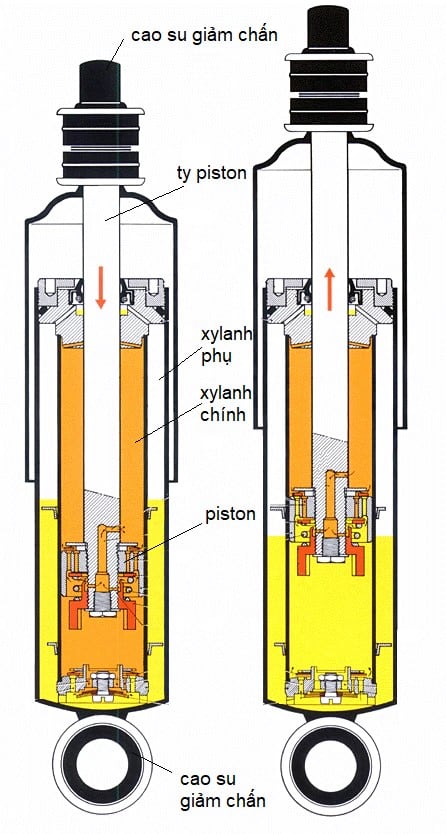
The suspension system connects the suspended part (vehicle body) with the non-suspended part (wheel, wheel), and ensures the relative movement of the body to the wheels. Shock absorbers and shock absorbers are mechanisms that only withstand vertical forces perpendicular to the road surface, so a directional mechanism is needed to ensure traction from the wheel to the body. and the wheels move together.
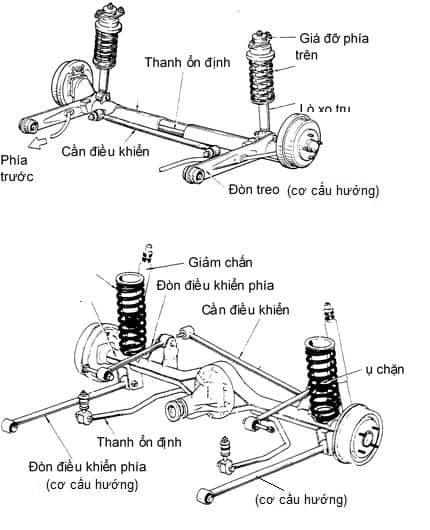
+ Proposal: Steering System (Structure - Classification - Principles)
Air suspension increases performance and comfort for passengers. Air forks are often featured on high-end models like the Porsche Cayennes, Porsche Panameras and Macanns as a standard option, paired with an A forks for increased comfort.
Porche's new models are equipped with an air compressor forks, it has a compressed air chamber occupying more than 3% of the volume of fork. Body height can be adjusted to low levels to increase comfort, increase "compaction", it can also be increased by electricity if necessary. The air suspension provides a stable balance for the body with the ability to automatically adjust the body height to suit the road conditions.
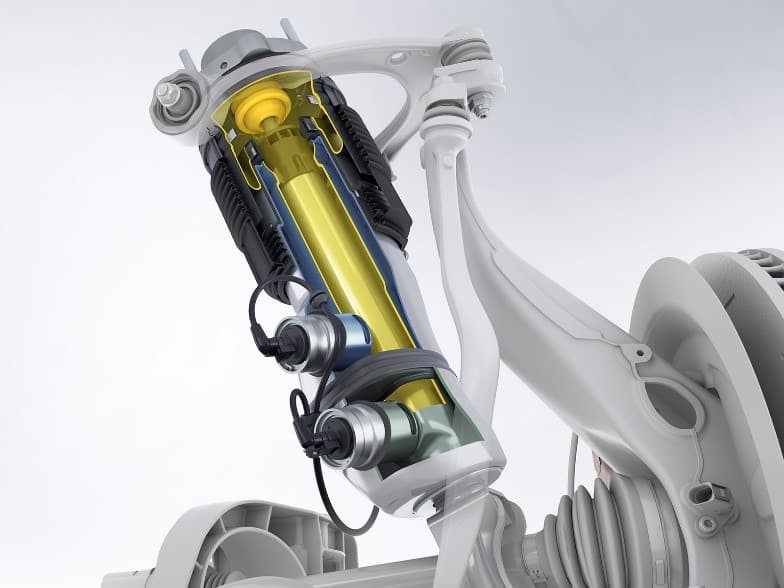
In addition, air forks are also equipped with Mercedes-Benz, Rolls-Royce, Lexus, Audi, BMW, Range Rover ... the principles of their operation are completely similar. It consists of compressed air chamber replacing springs, the air chamber is filled with air to increase and decrease the height to the necessary level.
The system requires an air compressor fitted on the vehicle, this is something that most previous passenger cars do not have, it is an electric motor driven compressor, the compressor will charge. air into the chamber when necessary.
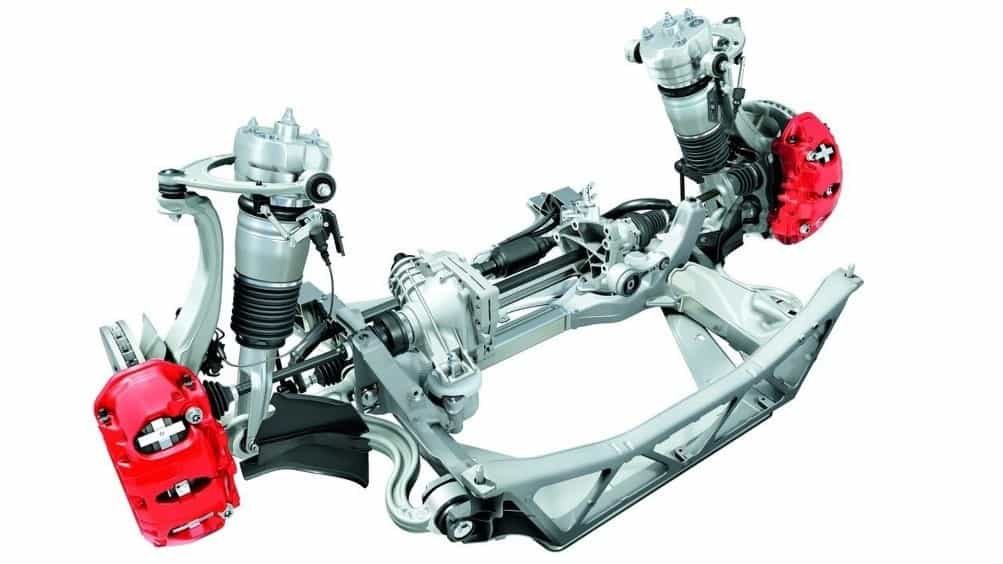
Caster A: is a type of mechanical link in the shape of A shape, the point at the top of the letter A is arranged with a rotating cylinder to connect with the wheel wheel joint by clamping groove, both sides of the A-leg are fitted with two rubber balls. shock absorbers (rubber A), they link the chassis through the bolts.
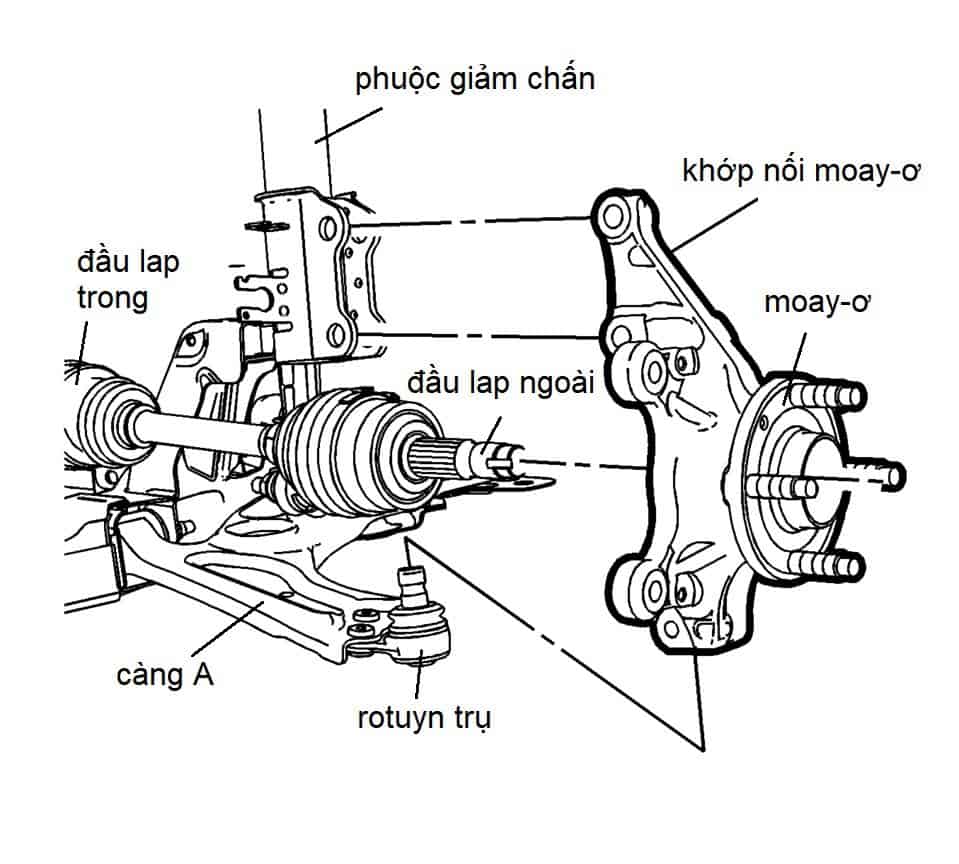
Stable bars, also known as balancing bars, bracing bars; Provide additional stability for the vehicle on the move. The stabilizer bar is a steel bar arranged in independent suspension systems. When there is an oscillation on one side of the wheel, this vibration is transmitted into the stabilizer bar to the wheel on the other side to create stability on many operating conditions. This bar also contributes to reducing the ability to turn over the body when the vehicle is turning.
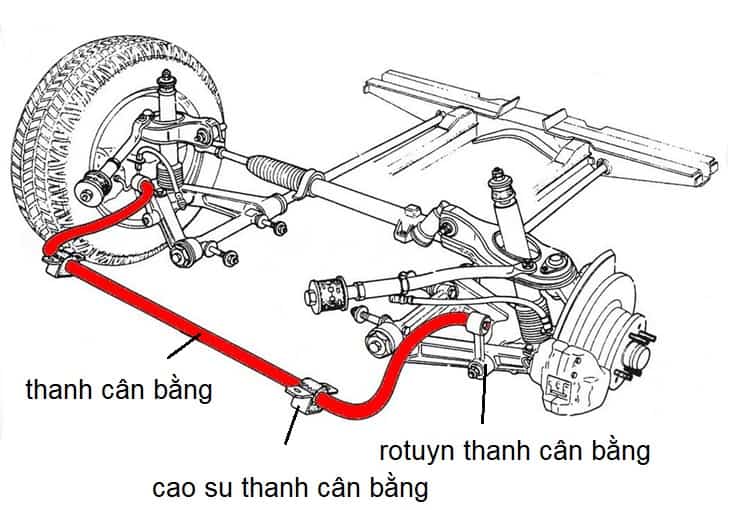
Maintaining the stability of the suspension on your vehicle ensures safety when you operate your vehicle on the road. Thanh Phong Auto will discuss the tasks that you need to perform and the system crashes / suspension to maintain the suspension's optimal functions:
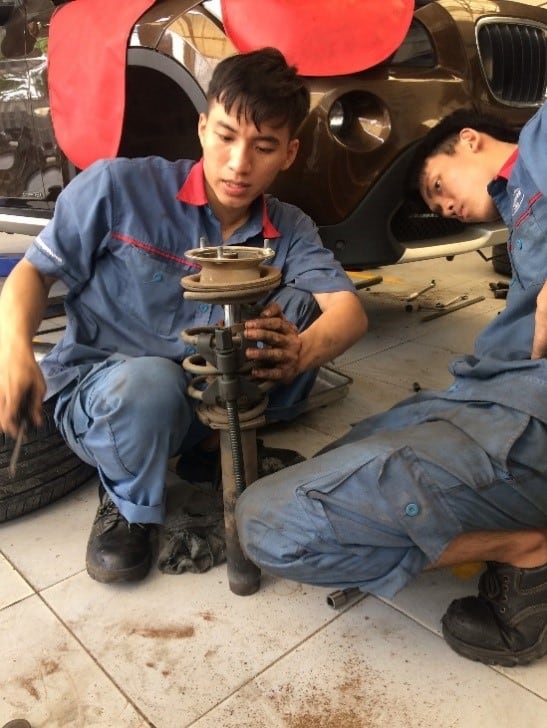
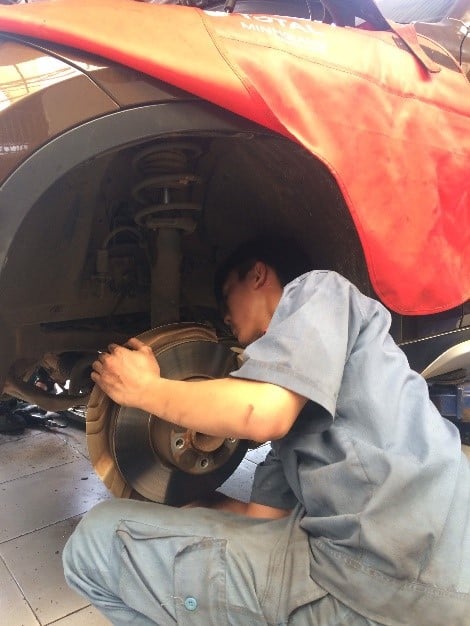
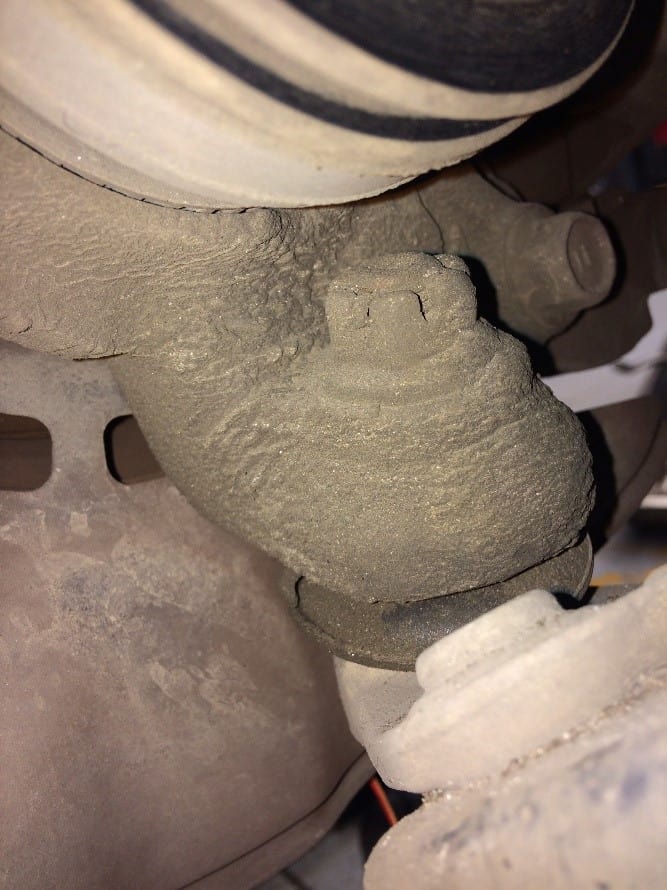
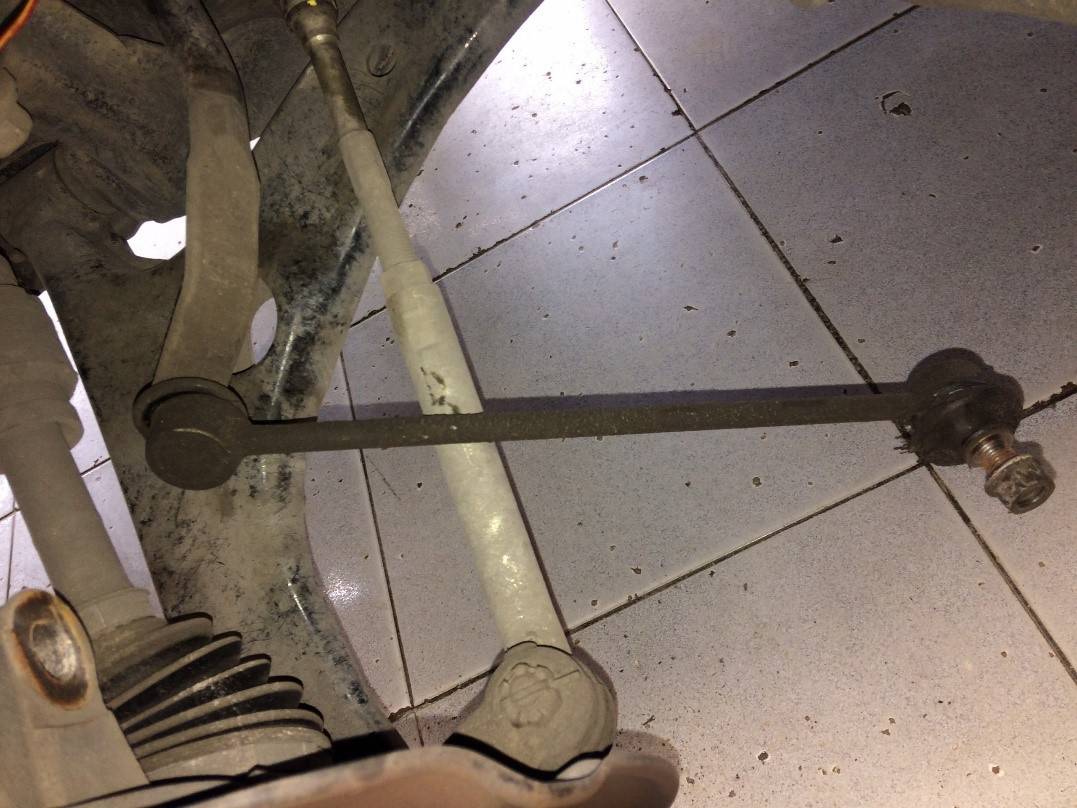
>>> Suggestions: Common damage to car suspension systems
Please contact Thanh Phong Auto as soon as you have any questions. We are always ready to advise, support, share everything with you!
We are happy to serve you, please contact us at Hotline: 0934 797 179 - 0934 222 763
You are viewing the article Car Suspension System (Suspension): Principle, Structure, Classification in the category Car Care in Thanh Phong Auto. All reviews about service quality at Thanh Phong Auto please leave a comment right below the article. Don't forget to check out other great posts at Thanh Phong and share it with everyone!
Cars Care Service Price Sheet At Thanh Phong Auto HCMC VietNam:
* The cars that we have mechanics: Mercedes, BMW, Audi, Lexus, Toyota, Honda, Mazda, Mitsubishi, Kia, Daewoo, Hyundai,Ford, Nissan, Volkswagen, Porsche, Chevrolet, Rand Rover, Innova, Fortuner, Vios, Fiat, Bugatti, Ferrari, Bentley, Hummer , Chrysler, Dodge, Renault, Cadillac, Volvo, Subaru, Daihatsu, Ssangyong, Roll-Royce, Peugeot, Smart Fortwo, Tobe M'car, Luxgen, Zotye, Haima, Geely, Baic, Hongqi, Cmc, Mini Cooper, Buick, Opel, Acura, Aston Martin, Vinfast, TQ Wuling.
To keep your vehicle running properly at all times, we offer a number of services that are carried out by our certified, expert auto service and repair technicians who have years of experience performing everything from oil changes to a complete engine overhaul.